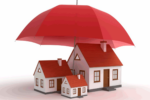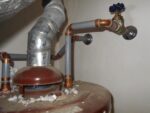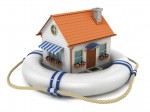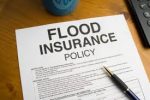Tips to Reduce Home Insurance Costs in South Florida?

- Have a residence with no smokers
- Pay your premium upfront
- Pick paperless billing
- Sign up for automatic payments

Serving South Florida


Filed under: 4 Point Inspection, Blog, Boca Raton real estate, Exclusive Buyer Agency, Exclusive Buyer Agent, First Time Homebuyers, Flood Insurance, Florida Real Estate, Home Buyer Advice, Home Buyers, Home Maintenance, home safety, Homebuyer Advice, Homeowners Insurance, Hurricane Preparedness, Insurance Claims, Real Estate, real estate news, South Florida Real Estate by Kim Bregman
Comments Off on Tips to Reduce Home Insurance Costs in South Florida?

As a Floridian, you already know the drill: hurricane season runs June 1 through November 30 each year, and certain hurricane preparations are needed to protect your home when storms appear to be heading your way. But what happens if you are some distance away, or even out of state, when this occurs? You can still prepare ahead of time – and a few extra steps is all it takes to secure your home while you’re away.
Performing the following hurricane preparation before vacation will allow you to relax and enjoy family time, or the scenery wherever you’re vacationing.
Insurance Coverage. Every year, you should review your homeowners, flood, and wind insurance policies to make sure you will have the coverage you need should your home be in the path of the next major hurricane or storm surge. Ideally, this is done before hurricane season begins, but should absolutely be done before you leave on vacation.
Home Safety Measures. Whatever hurricane preparedness you might normally do if you were home when a storm was approaching, do before you leave on vacation. This includes closing/installing your hurricane shutters, trimming trees, and bringing in any outdoor furniture or other items subject to becoming projectiles during a hurricane. Doing all of this before a storm is even on the horizon might seem like overkill – but the peace of mind it provides should bad weather threaten while you’re away will be priceless. Especially since you won’t be able to do much from a distance.
Electronics, Water & Gas. Consider unplugging valuable electronics and appliances to avoid potential power surges as the result of a hurricane or tropical storm. Alternatively, you could opt to turn the power off at the breaker. To avoid potential leaks, you may also want to consider turning off the main water and gas valves to your home.
Inform a Trusted Neighbor or Friend. Let someone you trust know about your vacation plans, including when you’ll be away, how you might be contacted, and any relevant details about your home security or other systems. They may be able to keep an eye on your home in your absence should a hurricane develop.
Ready the Emergency Kit. Stock up on supplies you would rely on if you were home during a hurricane, such as flashlights, batteries, first-aid kits, nonperishable food, and an ample supply of bottled water. This hurricane preparedness will be helpful if you return home without power or access to supplies are limited. Store a small version of this kit in your car, and top off the tank.
Have a Backup Plan. Should you be unable to get to your home upon your return from vacation, or if your home is damaged by a hurricane or tropical storm, have a contingency plan of possible friends or nearby locations you may be able to shelter in until your home is safe to return to.
Stay Informed. Even with all the right hurricane preparedness before you leave on vacation, you’ll want to monitor weather conditions from afar, especially once a hurricane or tropical storm has been identified. You’ll be able to make the best decisions when they are informed by as much information – and preparation – as possible.
Filed under: Blog, Exclusive Buyer Agency, First Time Homebuyers, Flood Insurance, Home Buyer Advice, Home Maintenance, home safety, Homebuyer Advice, Homeowners Insurance, Hurricane Preparedness, Insurance Claims, Uncategorized by Kim Bregman
Comments Off on Hurricane Preparedness Before Your Vacation

Filed under: 4 Point Inspection, Blog, Exclusive Buyer Agency, First Time Homebuyers, Florida Real Estate, Home Buyer Advice, Home Buyers, home Inspections, Homebuyer Advice, Homeowners Insurance, Insurance Claims, PB Pipes, PEX piping, Polybutylene pipes, Real Estate, Real Estate Investment, real estate news, South Florida Real Estate, What Buyers Should Check When Buying an Older Home by Kim Bregman
Comments Off on Beware of Polybutylene Pines in Older Homes

|
|
|
|
|
|
|
|
Filed under: 2022 Real Estate, Blog, Boca Raton real estate, Exclusive Buyer Agency, First Time Homebuyers, Flood Insurance, Home Buyer Advice, Home Buyers, home safety, Homebuyer Advice, Homeowners Insurance, Hurricane Preparedness, Insurance Claims, real estate news, South Florida Real Estate by Kim Bregman
Comments Off on 2022 Hurricane Preparedness Guide

Filed under: Blog, Boca Raton real estate, Exclusive Buyer Agency, Exclusive Buyer Agent, First Time Homebuyers, Flood Insurance, Florida Real Estate, Home Buyer Advice, Home Buyers, home safety, Homebuyer Advice, Homeowners Insurance, Hurricane Preparedness, Insurance Claims, Real Estate, Real Estate Investment, real estate news, South Florida Real Estate by Kim Bregman
Comments Off on Pros and Cons of Self-Insuring For Wind Coverage

Filed under: Blog, Boca Raton real estate, Exclusive Buyer Agent, First Time Homebuyers, Flood Insurance, Florida Real Estate, Home Buyer Advice, Home Buyers, Home Maintenance, Homebuyer Advice, Homeowners Insurance, Insurance Claims, Real Estate, Real Estate Investment, real estate news, Real estate trends, South Florida Real Estate by Kim Bregman
Comments Off on What Is Not Covered Under Standard Homeowners Insurance?

Filed under: Blog, Exclusive Buyer Agent, First Time Homebuyers, Home Buyer Advice, Home Buyers, Home Maintenance, Homebuyer Advice, Homeowners Insurance, Insurance Claims, Real Estate, Real Estate Investment, real estate news, western north carolina real estate by Kim Bregman
Comments Off on What do to if your pipes Freeze

After Hurricane Irma, much of Florida lost power. And during Hurricane Maria, all of Puerto Rico is in the dark.
The one-two punch of storms reminded Floridians of the importance of owning a generator. If you’re shopping for a power source, here are factors to consider:
How much do you want to spend?
Stand-by generators can power your whole house and usually run on natural gas or propane. They typically cost $5,000 to $10,000, according to Consumer Reports. And you’ll need to start planning the installation months in advance. Most homeowners opt for portable generators, which usually won’t run central AC and cost $400 to $1,000. (However, Consumer Reports’ top-rated portable generator is a Honda that goes for $3,999.)
What do you want to power?
If you want to run a fridge, a fan and a few lights, a small portable generator will do the job. If you hope to keep living as if the hurricane never hit, you’ll need a stationary generator. And if you’re willing to rough it but would like to run a window AC unit, you’ll want to make sure before the storm that your generator has enough juice to run your AC. Another caveat: Cheap generators can produce power surges that will fry expensive electronics.
How much noise can you stand?
Or, put another way, how many decibels do you want to bombard your neighbors with? In general, the more expensive the generator, the quieter it is.
Technology is getting better.
For decades, Floridians have been buying portable generators that were the mechanical equivalent of muscle cars, says Paul Hope of Consumer Reports. Now, though, manufacturers are designing fuel-injected engines for generators. These models are quieter, more fuel-efficient and emit less carbon monoxide. They’re also more expensive.
The smart move, says Hope, is to shop for a generator between storms or after hurricane season. That gives you time to research what you need — and to hire an electrician to install a transfer switch or interlock device that lets the generator power your house.
Filed under: Exclusive Buyer Agent, First Time Homebuyers, Florida Real Estate, Home Buyer Advice, Home Buyers, Home Maintenance, Homebuyer Advice, Insurance Claims, Real Estate, Real Estate Closings, Real Estate Investment, real estate news, Real estate trends, Relocation, South Florida Real Estate by Kim Bregman
Comments Off on Buying a generator: Tips to know before you make a purchase

If a flood swamps your home, will insurance cover the damage? That depends on the value of your home, the amount of water damage and whether you have a flood insurance policy.
Let’s look at some persistent myths about flood insurance.
Myth: You must live in a flood plain to get coverage.
If you live in a flood plain, your mortgage company will likely require you to buy flood insurance. But you can purchase it even if you don’t live within a flood zone. “Almost anybody can get flood insurance who wants flood insurance,” says Chris Hackett, director of personal lines for the Property Casualty Insurers Association of America. The price through the federal flood insurance program is based on standardized rates and depends on the home’s value and whether or not it’s in a flood plain.
Myth: Flood insurance covers everything.
When it comes to the physical structure of your house, federal flood insurance policies top out at $250,000. If you have a $300,000 house that’s a total loss because of a flood, the most you can recoup through the program is $250,000 to cover the structure itself. For your personal possessions, the cap is $100,000 under the federal program.
Myth: My homeowners policy covers floods.
“Unfortunately, a lot of folks may be under the impression that their standard homeowners policy might cover flood damage,” Hackett says. But the standard policy does not! The typical home insurance policy doesn’t cover earthquakes or floods. So a homeowner wanting coverage for either of those disasters will need to pick up separate, specific coverage against those types of disasters.
Myth: Water damage is water damage. When it comes to your insurance, not all water damage is the same.
If there’s a storm and your “roof comes off and water comes through, that would be covered under your homeowners policy,” Hackett says. “Versus a flood situation where the water is rising from an over flowing riverbank overflows or an unnatural amount of rain that is rising from the street.
Myth: Flood maps don’t change.
Flood plains (and flood plain maps) change and evolve. Just because you weren’t in a flood plain when you bought your home a few years ago doesn’t mean you’re not in one now.
For more information, visit FloodSmart.gov.
Filed under: Blog, Exclusive Buyer Agent, Flood Insurance, Florida Real Estate, Home Buyer Advice, Home Buyers, Homebuyer Advice, Homeowners Insurance, Insurance Claims, Real Estate, Real Estate Investment, real estate news, South Florida Real Estate by Kim Bregman
Comments Off on Flood insurance: Facts and Fiction

Florida, Georgia and North Carolina residents affected by Hurricane Matthew will begin surveying damages to their property and belongings.
Florida Chief Financial Officer Jeff Atwater and Insurance Commissioner David Altmaier put together the following tips to help Floridians begin the process of filing insurance claims for damaged property and belongings and this may prove useful to residents in other states as well:
Tip 1: Locate all applicable insurance policies. This may include a homeowners’ policy, flood policy (flood coverage is not covered under a typical homeowners’ policy and is separate coverage), and an automobile policy (may cover damage to your car from flooding).
Tip 2: Document all damaged property and belongings. Take photos or shoot video footage before attempting any temporary repairs. When you file an insurance claim, you may be asked for visual documentation of damages.
A photographic home inventory is a handy resource for this situation. A free smartphone app developed by the National Association of Insurance Commissioners called “MyHome Scr.APP.book” can help you take and store a room-by-room log of photos.
Tip 3: Contact your insurance company or insurance agent as soon as possible to report damages.Insurance policies require prompt reporting of claims, so it is important to act as soon as possible.
Tip 4: Cover damaged areas exposed to the elements to prevent further damage. Your insurance company may reimburse the expense of these temporary repairs, so keep all receipts.
Do not dispose of any damaged personal property until your insurance company adjuster has had an opportunity to survey it.
Florida consumers who have questions about their insurance coverage are encouraged to call CFO Atwater’s Department of Financial Services, Division of Consumer Services’ Insurance Helpline. Helpline experts can be reached by calling 1-877-MY-FL-CFO (1- 877-693-5236), or online at: myfloridacfo.com/hurricanematthew.
Filed under: Blog, Exclusive Buyer Agent, First Time Homebuyers, Florida Real Estate, Home Buyer Advice, Home Buyers, Home Maintenance, Homebuyer Advice, Insurance Claims, Real Estate, real estate news, South Florida Real Estate by Kim Bregman
Comments Off on Managing the post-storm insurance claims process
 Kim N. Bregman
Kim N. BregmanAll information is provided by the licensed REALTOR®/Broker/Agent. This information is not verified for authenticity or accuracy and is not guaranteed. This website is not responsible or liable in any manner for any content posted herein or in connection with our services. Information is not guaranteed and must be confirmed by the end user.
Copyright © 2024 OPTIMA PROPERTIES. All Rights Reserved. Privacy Policy | Intellectual Property Rights | Sitemap | Real Estate Website Design & Internet Marketing by Agent Image